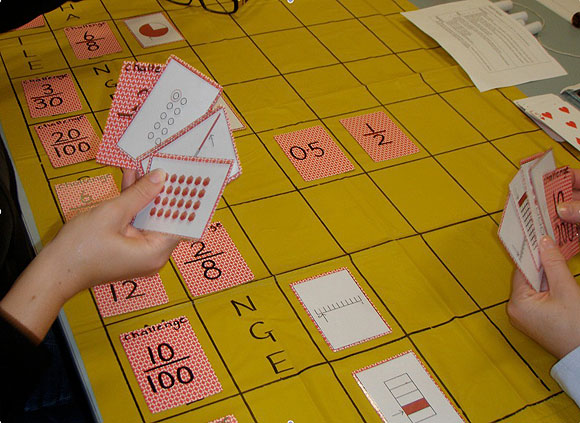Home > Fractions > Assessment > Assessment approaches > Observation > Observation example
Observation example
The picture shows a pair of year 6 students working on finding sets of different representations of the same fraction.
The teacher had three main objectives for observing the girls as they worked. The teacher wanted to answer the following questions.
- Do any denominators cause difficulty?
- Do any particular representations cause difficulty?
- What fraction language are the students comfortable with and what fraction language do they avoid or misuse?
Teacher observations:
- They chose the challenge pack of cards (I was surprised they felt confident)
- Made up a simple game, taking turns — ended up with some 'can't do' cards. Worked most out together. Jane had 0.25 (I had to explain). Tilly had cards for \(\frac{3}{30}\). Tried to make sense of them (I had to explain).
- Tilly questioned the number line for \(\frac{10}{100}\). Jane explained it was like "cutting up a stick in 10 pieces but each piece is really another 10 little pieces. You know, like the metre ruler. Where it's got 10 cm."
- Both struggled to match the three-quarter circle with \(\frac{6}{8}\). Associated the shape with quarters and could not visualise eighths.
- Neither girl used the term equivalent — they said "same as" or "same size".

